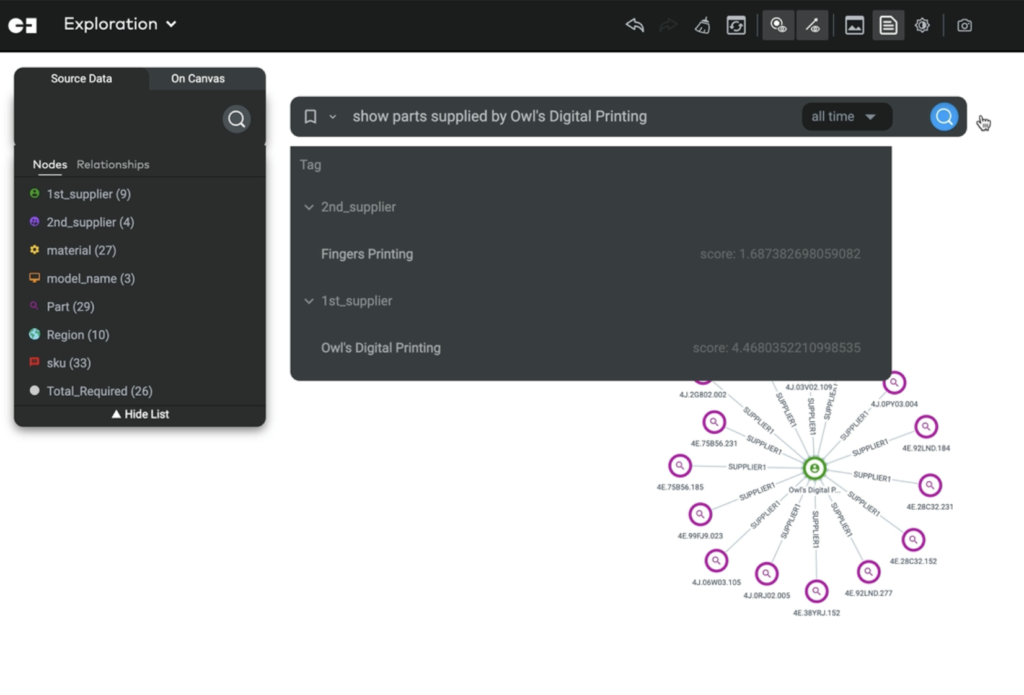Generative AI has taken over the technology news cycle. Apps like OpenAI’s ChatGPT and Microsoft’s Sydney have enchanted professionals and consumers worldwide. However, it’s been only 3 months since OpenAI released ChatGPT to an unsuspecting public, and there’s already been an avalanche of warnings, condemnations, celebrations, and the like across all industries and verticals. I even used ChatGPT a few weeks ago to generate a list of four ways to use ChatGPT for graph databases.
A Really Powerful Autocomplete
One thing we know is these large language models (LLMs) are here to stay. LLMs like ChatGPT use natural language processing and neural networks to generate text based on user prompts. The best de-mystified description I’ve read so far is veteran entrepreneur and data scientist Steve Wolfram describing it as basically a really powerful autocomplete. The quick adoption of ChatGPT by professionals, consumers, and students indicates how critical text and chat-based interactions will be in bringing more information to more people.
Gemini Data is dedicated to getting graph technology into the hands of as many people as possible. Our no-code Gemini Explore platform is built from the ground up to give even “less technical’ users access to the power and possibilities of graphs. Our search interface was designed to keep all the levers and gears of graph query languages under the hood. With Gemini Explore, end users don’t need to learn Cypher, Gremlin, or GQL to ask questions of their data. We’ve extended this commitment to access and ease of use with our integration with OpenAI’s GPT-3.
Human Text Input, Graph Data Output
GPT-3 is ChatGPT’s big sister, providing similar functionality in natural language processing and understanding. In just under a year, hundreds of companies have added GPT-3 to their applications to make using this advanced technology as easy as just typing or saying what you want to do. Then, the system gives you back exactly what you want. Here’s how it works:
Our first foray into this integration has been to bring GTP-3 into our natural language search feature. End users can simply type what parts of a graph they’d like to see – or get answers to a specific question. Explore captures the query and sends it to GPT-3 for analysis.
GPT-3 is already tuned to know the various actions a user can take with Explore. Commands like LOAD, SELECT, UNSELECT, and REMOVE are well within the purview of GPT-3 to translate. Along with the actual commands of our app, GPT-3 can understand the synonyms for the various verbs, so it knows if the user says “show,” “find,” or “display,” it’s the same as if Explore was issued a LOAD command. GTP-3 also interprets the nouns, verbs, and relationships in the request to determine the types of nodes to display or select.
So if a user tells Explore, “Get all actors that acted in The Mummy” is interpreted by GPT-3 and sent back to Explore as:
Action: LOAD
Method: by relation
Nodes: Actors
Relationship: ACTED_IN
Subject: The MummyAnd those nodes and related relationships are displayed. Without this simplified interface of human text input, the end user would have to know a query language like Cypher and how to construct this command:
MATCH (a:Actors)-[:ACTED_IN]->(m:Movie)
WHERE m.title = 'The Mummy'
RETURN a.nameProperly tuned, GPT-3 will understand that “acted in,” “performed in,” “appeared in,” and “were in” all point to the same ACTED_IN relationships. Further tuning will make sure that similar queries return results for the beloved Brendan Fraser movie in 1999 and Boris Karloff’s legendary star turn 1932, but also the heinous Tom Cruise movie in 2017.
This type of integration can be tuned for general applications but has much more impact with specific graph database use cases. For example, GTP-3 can be tuned to specific graph database configurations, types of nodes, and relationships.
Gen AI is just getting started and we are excited to see where these burgeoning technologies take us next. At Gemini, we are always trying to remove the friction between the end user and getting the most out of their data. GPT-3 is another way we bring more people to harness the capabilities and benefits of the graph.

